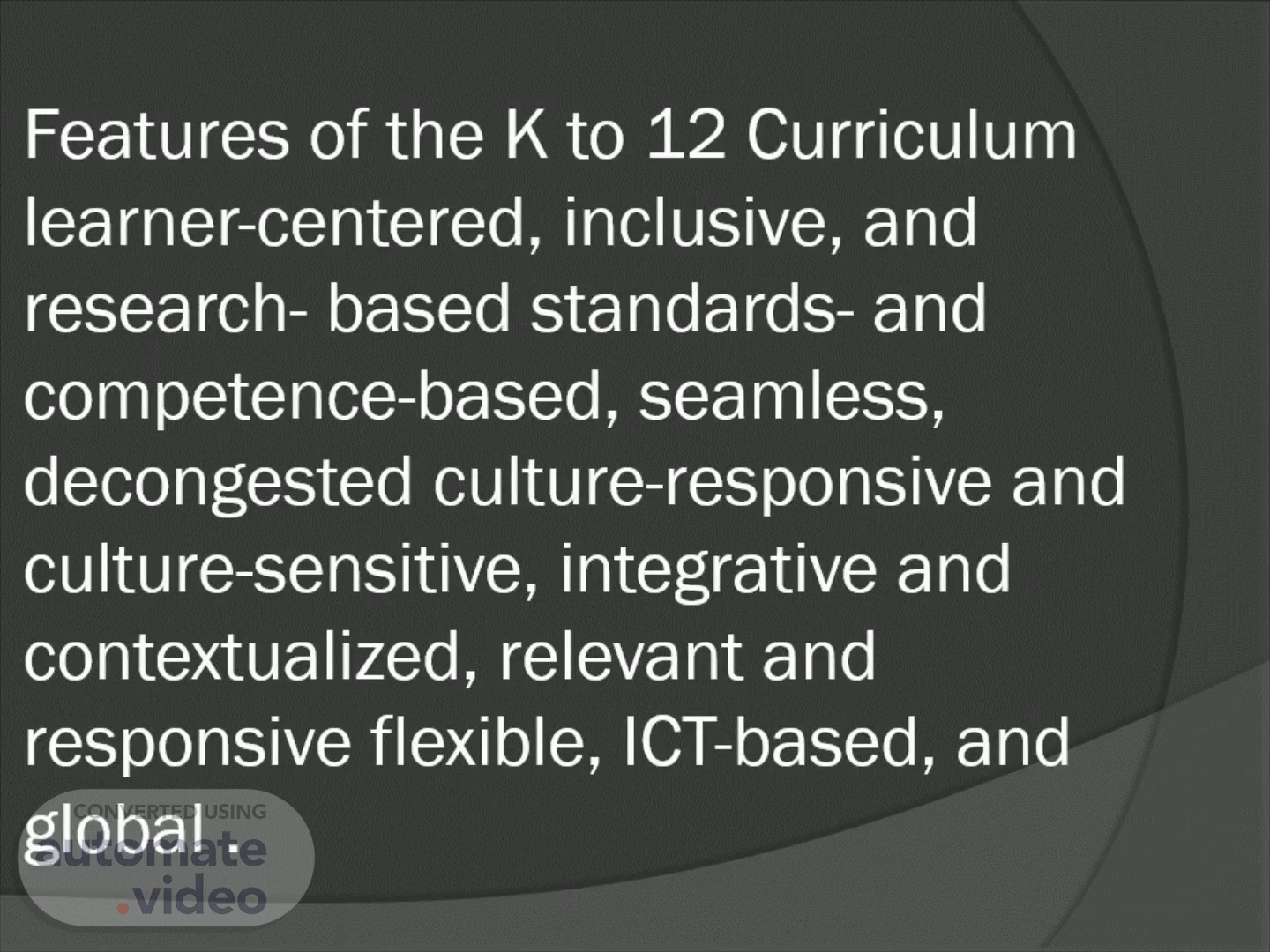
Features of the K to 12 Curriculum learner-centered, inclusive, and research- based standards- and competence-based, seamless, decongested culture-responsive and culture-sensitive, integrative and contextualized, relevant and responsive flexible, ICT-base
Scene 1 (0s)
Features of the K to 12 Curriculum learner-centered, inclusive, and research- based standards- and competence-based, seamless, decongested culture-responsive and culture-sensitive, integrative and contextualized, relevant and responsive flexible, ICT-based, and global ..
Scene 2 (15s)
CONTEXTUALIZATION The K to 12 curriculum framework highlights the fundamental importance of context in shaping the curriculum, and consequently, the teaching- learning process.
Scene 3 (26s)
Enhanced Basic Education Act of 2013 (RA 10533), Sec. 5 The DepEd shall adhere to the following standards and principles in developing the enhanced basic education curriculum: (d)… contextualized and global ..
Scene 4 (39s)
Contextualization - refers to the educational process of relating the curriculum to a particular setting, situation or area of application to make the competencies relevant, meaningful, and useful to all learners..
Scene 5 (52s)
- Is defined as employing the items of the language in a meaningful and relevant context.This help learners acquire knowledge. It also develop their abilities and attitude..
Scene 6 (1m 4s)
The degree of contextualization may be described and distinguished into the following: 1. Localization 2. Indigenization.
Scene 7 (1m 14s)
1. Localization refers to the process of relating learning content specified in the curriculum to local information and materials in the learners’ community.
Scene 8 (1m 26s)
Examples of Localization 1. Examples used in lessons start with those in the locality 2. Names, situations, setting needed to give context to test questions or problem-solving exercises are those of the immediate community.
Scene 9 (1m 40s)
3. Local materials are used as often as possible in making instructional materials 4. Local stories are used in the language learning areas 5. Translating a story written in another language to the language of one’s learners.
Scene 10 (1m 54s)
2. Indigenization refers to the process of enhancing curriculum competencies, education resources, and teaching-learning processes in relation to the bio-geographical, historical, and socio-cultural context of the learners’ community..
Scene 11 (2m 8s)
Indigenization may also involve the enhancement of the curriculum framework, curriculum design, and learning standards of subject areas, guided by the standards and principles adhered to by the national curriculum..